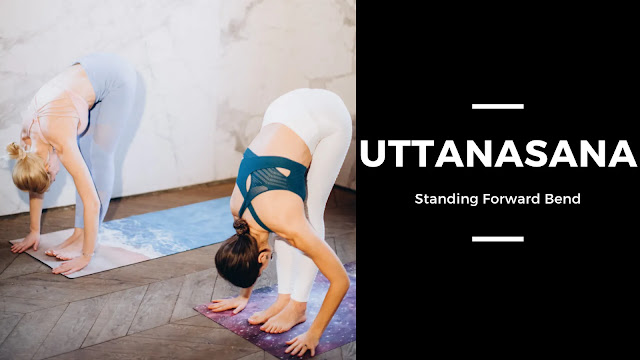This position teaches the basic mechanics of bending forward from the hips. It can be constructed with feet together or open feet hip width.
Standing Forward Bend is not about touching your toes, contrary to popular assumption. It's also not about squeezing as much length as you can from your fingertips." Many newcomers are astonished (and a little suspicious) to hear that Uttanasana isn't about the link between the fingers and toes. It's almost all of the things that happen in between.
The Sanskrit word uttanasana consists of the words "ut," which means "intense," "powerful," or "deliberate," and "tan," which means "stretch" or "lengthen." Uttanasana is a deliberate extension of the entire back body, which includes the area between the soles of the feet and the backs of the knees.
Steps:
1. Start with Tadasana pose and continue onto to Urdhva hastasana posture.
2. Staying in urdhva hastasana position, while exhaling, flex the trunk forward while keeping your chest open and directing the hands toward the feet
3. Place your hands on either side of the feet ( if they don’t reach the ankles or shins , or use a tape )
4. Keeping your legs active, rotate your ischia toward the ceiling
5. With the grip of your hands exert a strong attraction of the chest towards the legs and opening the elbows laterally outwards.
6. Keep your neck relaxed
7. If you feel pressure or back pain, flex your knees slightly.
When you discover the link between all of these activities, it's no longer about the stance, but rather about how I'm relating to the sensation of being in the pose.
• This pose will relieves the spine and pelvis muscles.
• It stimulates the legs and ankles
• Straightens your back muscles of the legs
• Develop balance
• All organs of the abdomen are massaged and stimulated
• Mobilizes the intestines and abdominal fat
• Promotes internalization and calms the nervous system.

No comments :
Post a Comment